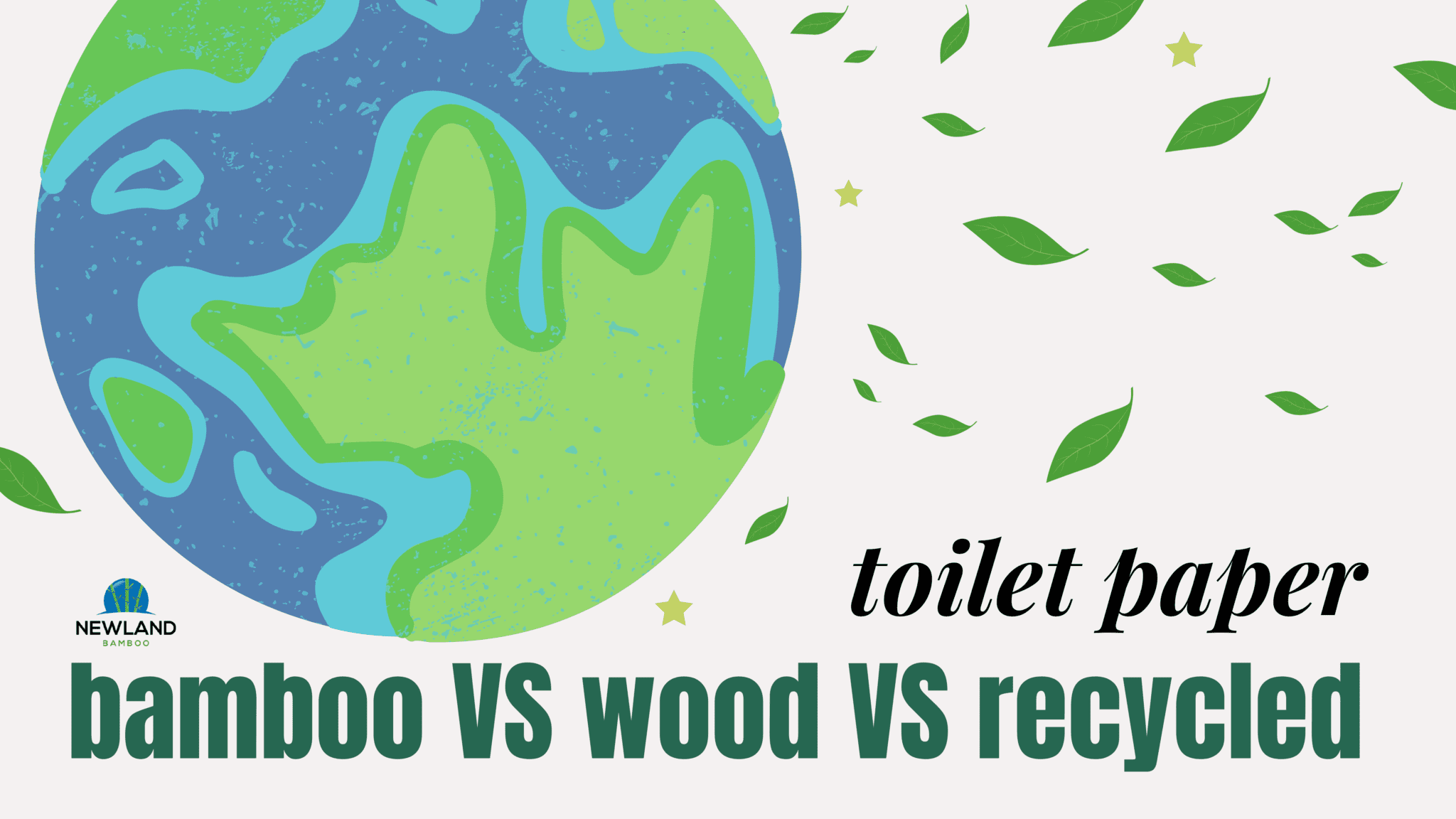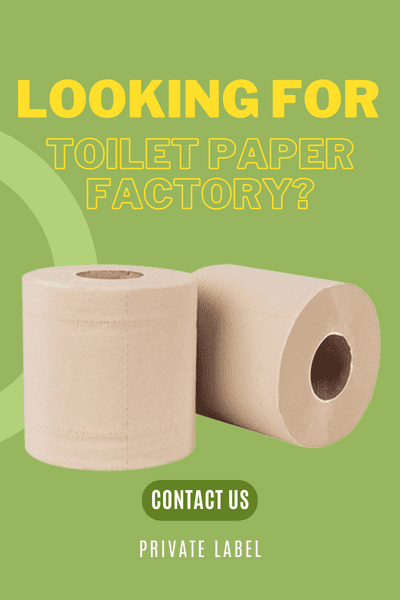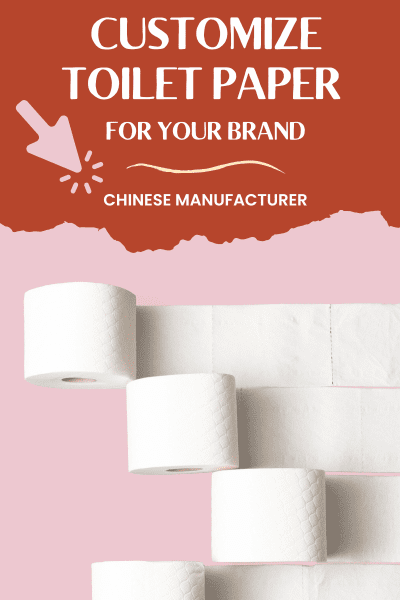Quick Answer: What Is the Most Eco-Friendly Toilet Paper?
Eco-friendly toilet paper generally refers to products made from recycled paper or sustainably sourced bamboo.
- Recycled toilet paper reduces the need for virgin wood, directly protecting forests and lowering landfill waste.
- Bamboo toilet paper leverages bamboo’s rapid renewability and low carbon footprint, offering an alternative with minimal land and water use.
Compared to conventional wood pulp toilet paper, both bamboo and recycled options present more sustainable choices, depending on sourcing practices and production impacts.
1. Understanding Each Type
| Type | Source Material | Main Features |
|---|---|---|
| Wood Pulp Toilet Paper | Virgin trees (e.g., softwood, hardwood) | Soft, durable, but contributes to deforestation and high resource use |
| Papel higiénico reciclado | Recycled paper fibers | Reduces waste, protects forests, may feel rougher |
| Papel higiénico de bambú | Fast-growing bamboo plants | Highly renewable, eco-friendly, naturally soft |
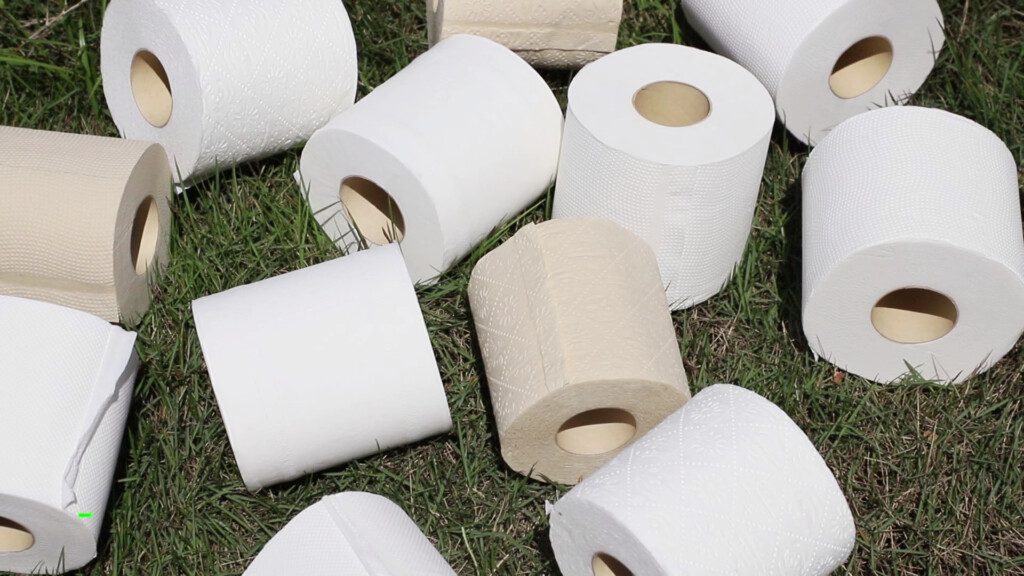
2. Key Comparisons
2.1 Environmental Impact
- Papel higiénico de madera: High environmental cost—requires logging, heavy water, and energy use.
- Papel higiénico reciclado: Helps protect forests by reusing existing fibers; however, processing may still involve chemicals. According to an analysis by The Ecologist, not all recycled papers are created equal, and production methods can vary in their environmental friendliness. Read more insights from The Ecologist here.
- Papel higiénico de bambú: Bamboo grows back rapidly, uses less water, and does not require replanting. Although NRDC points out that bamboo may sometimes be less environmentally friendly than recycled paper when plantations replace natural forests, sustainably sourced bamboo remains a highly renewable, low-carbon option. Reference: NRDC’s Tissue Scorecard.
Quick Summary:
For pure forest conservation, recycled paper wins; for carbon reduction and renewable sourcing, bamboo leads.
To better understand the differences between conventional, recycled, and bamboo toilet paper, watch this short video comparison below:
2.2 User Experience
- Wood: Extremely soft and thick, traditional “luxury” feel.
- Recycled: Often rougher, thinner, and less consistent.
- Bambú: Naturally soft, hypoallergenic, and strong without excessive thickness.
2.3 Plumbing and Septic Safety
- Wood: Some thicker wood papers can cause clogging issues.
- Recycled: Generally safe but may vary by brand.
- Bambú: Highly septic-safe—dissolves quickly and naturally, ideal for RVs, rural homes, and eco-resorts.
2.4 Visual Comparison Chart
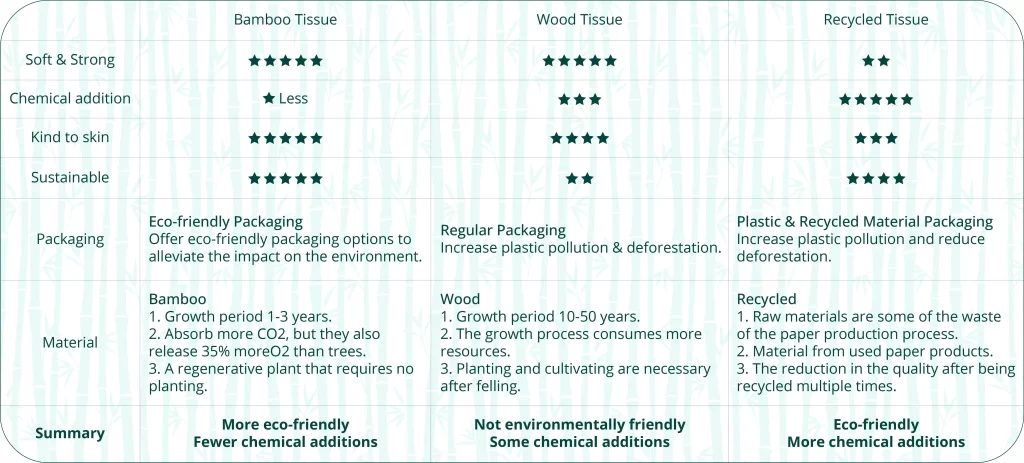
This chart highlights the differences between Bamboo, Wood, and Recycled Tissue based on softness, chemical additions, sustainability, packaging, and materials.
3. Pros and Cons Summary Table
| Type | Pros | Cons |
|---|---|---|
| Wood | Very soft, strong | High resource use, deforestation concerns |
| Recycled | Eco-friendly, protects forests | Rougher texture, potential chemical residues |
| Bambú | Renewable, soft, septic-safe, low carbon footprint | Slightly higher cost, land use debates |
4. FAQ
-
¿Qué diferencias hay entre el papel higiénico de madera, el reciclado y el de bambú?
Wood paper uses virgin trees; recycled reuses old paper fibers; bamboo uses fast-growing plants with minimal chemical need and low carbon footprint.
-
¿Por qué el papel higiénico de bambú es mejor para el medio ambiente?
Bamboo regenerates quickly, requires less water, no harmful pesticides, and captures more carbon dioxide than traditional trees.
-
¿Es seguro el papel higiénico de bambú para los sistemas sépticos?
Yes. Bamboo toilet paper is septic-safe. It dissolves quickly and biodegrades naturally without harming plumbing or septic tanks.
-
Why do some organizations claim recycled paper is more eco-friendly than bamboo?
Recycled paper protects old-growth forests directly. However, bamboo significantly reduces carbon footprint and grows without replanting, offering a complementary eco-benefit.
-
Does bamboo toilet paper clog pipes?
No. Bamboo toilet paper is designed to dissolve faster than most conventional and recycled paper options, reducing blockage risk.
-
Which toilet paper has the lowest carbon footprint?
Bamboo toilet paper—its rapid growth rate and minimal resource requirements result in a much lower carbon footprint compared to virgin wood pulp.
-
Why is bamboo toilet paper slightly more expensive?
Because sustainable farming, responsible processing, and certification standards (such as FSC) add value and cost to ensure genuine eco-friendliness.
-
¿Se puede personalizar el papel higiénico de bambú para las empresas?
Yes! Companies like Newland Bambú offer private-label bamboo toilet paper customization, supporting eco-conscious branding initiatives.
5. Conclusion
When comparing wood, recycled, and bamboo toilet paper, it’s clear that bamboo offers a balanced, forward-looking choice.
Environmentally sustainable, soft, strong, and plumbing-friendly—bamboo toilet paper represents a future-aligned everyday solution.
Bamboo Toilet Paper: An Emerging Trend for Brands
With the growing global demand for sustainable products, bamboo toilet paper is opening new opportunities for brands looking to align with eco-conscious markets.
If you’re considering adding bamboo tissue to your product portfolio or starting a new eco-friendly line, Newland Bambú is here to support your business vision.

